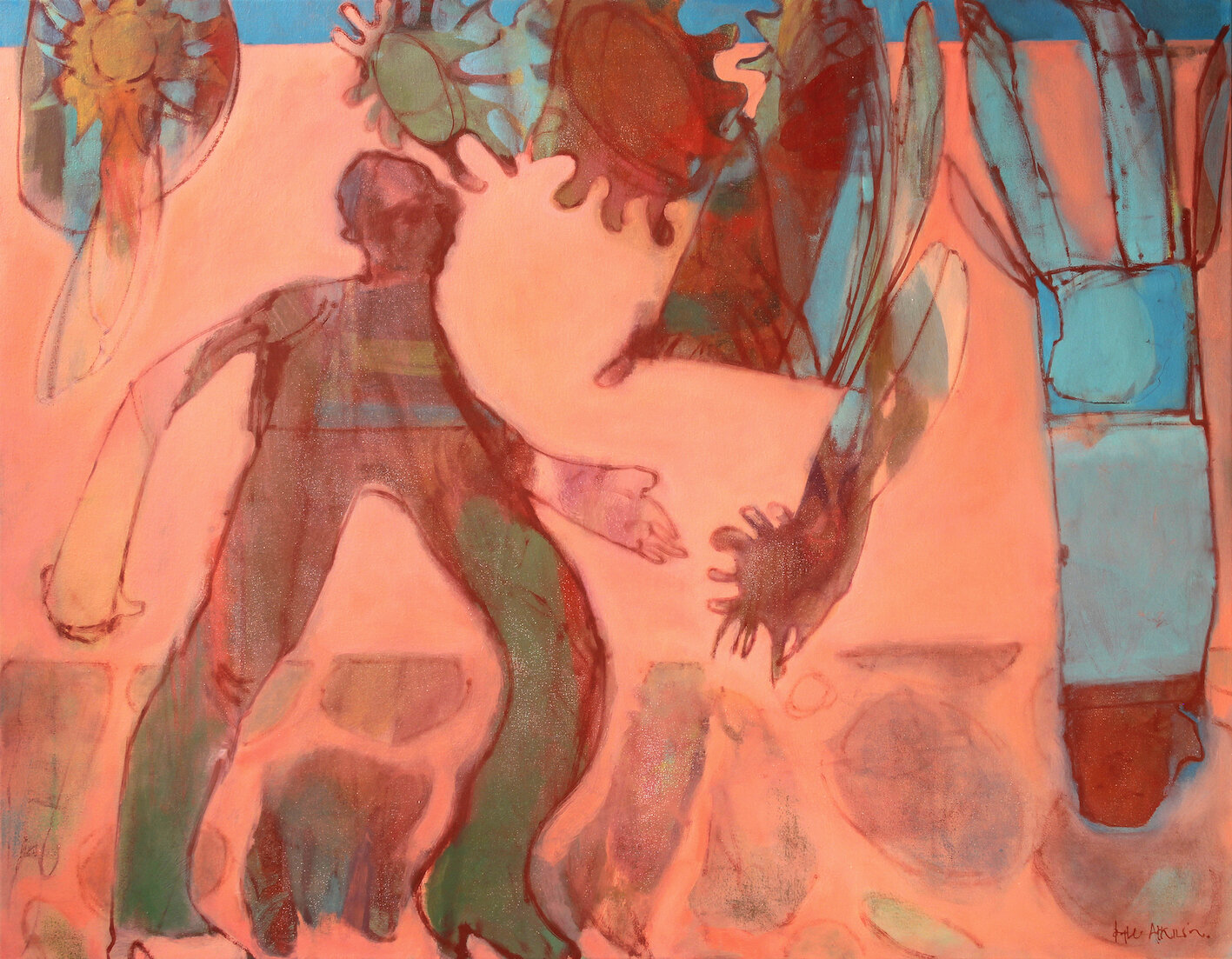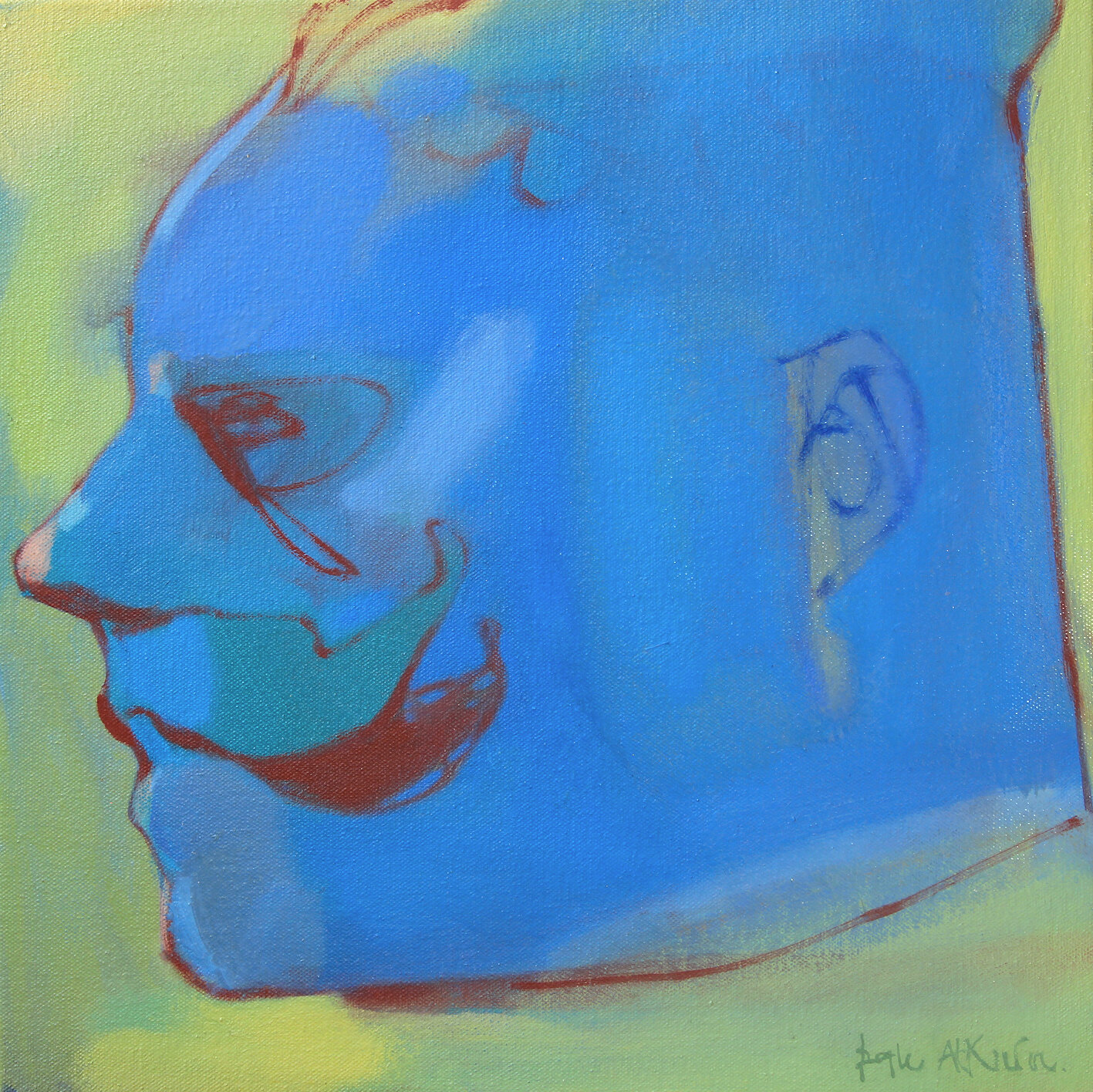Artist Q & A with Dale Atkinson
Dale Atkinson’s exhibition at Gallagher and Turner runs from October 1st - November 21st.
If you would like to come and see the exhibition please contact the gallery to ensure social distancing. We’re open from 10.30am - 5pm Tuesday - Friday and 10.30am - 4pm on Saturdays
Sparrowman, 2018, pencil on paper drawing
1. What’s your background?
I was born in the Ashbrooke area of Sunderland, about 100 metres from Christ Church and the same again from what was then the Art School in Backhouse Park. This, and for a few years that edge of Barnes closest to the Tunstall Hills, were the parts of town in which I grew up. My art education took in what was luckily for me a superb art department at Southmoor Comprehensive School, a foundation year at Sunderland School of Art and finally, via a brief spell in London, four years at Newcastle University. Upon graduating I was taken on by The Anne Berthoud Gallery in London and also enjoyed a few years working in Bristol. Since 1990 I’ve lived back in the North East and from about 1994 until recently been represented by first the Nicholas Treadwell Gallery followed by Mara Helen Wood at the University Gallery.
The Uncertain Pilgrim, 2019, oil on canvas
2. What inspires your work?
Materially I’d say most things have the potential to spark something or simply find their way into my work. Though of course, like anyone, these are inevitably subject to those underlying personal themes that are inherent in our reading of them and, of course, whether paths cross at the right time. If a fiend with a saw turns out the best way to comment upon being robbed of one’s singularity; or an Adam and Eve scenario is what grows from a story in a newspaper, then fine, for as long as it feels right, probably more important is the puzzle of what comes next. The finding of ways to translate their part in the idea, or whatever they add to it, onto canvas or paper. There’s never just one thing behind the motivation or need to make an image, it’s more the balancing of many parts in a process. My approach to work was once described as ‘greedily inclusive’ and I think that probably comes close to summing it up..
Head Study xiv, 2018, oil on canvas
3. What is your working process like?
Physically, my working day generally begins at around 7-7.30am and carries through until the light goes if I’m painting or otherwise until about 8pm. Later in the evening I’ll usually spend another hour or so reviewing and trying not to fiddle with the day’s work, or else preparing for the next day. None of this is fixed, however, that just seems to be how it goes. I’m not a good sleeper, I can usually fall asleep easily, I can even do it standing up, but remaining asleep for more than a couple of hours is difficult, so my day can just as easily start at 4am – great in the summer, but freezing in the winter.
As for the way I work, well my instinct is to keep things open for as long as possible. There’s a subject, of course, the idea that prompts beginning the work in the first place and there are the imagined early solutions that lead you in. But irresistibly during the evolution of any piece, the idea and your interpretation, even validation, of it will evolve too. The reason for the work itself needn’t change and is only rarely sent off in a different direction completely, but still it does develop and with it, naturally I suppose, so do you. I guess that’s part of the point. The effect of this is a working method, which right to the end of any painting or drawing is a process of alteration, of overworking and erasure.
Head full of Bees, 2018, oil on canvas
4. Where do you make your work and what’s good about working here?
For the last twenty years I have occupied an open ceilinged, white walled studio built on to the side of my home. I’ve rented rooms in the past, but for one reason or another either given up on them, or them on me. The importance of a good place to work, somewhere to open up properly, takes a while to figure out, but once you find it, you know. This space has felt right from the start; there’s plenty of glass, so good natural light which is what I paint by; it’s available any time and is sufficiently cut-off that I can vanish when I need to. There’s a chair, a stool, my late grandmother’s kitchen table where I draw; a few easels that usually have a couple of paintings on the go at once; a large walk-around palette and a drawing chest. But this is a working space too, so there are also piles of things, all over the place - papers, rags, tubes of paint, old brushes, portfolios and frames, all the stuff that collects in a studio. Most of my time is spent here.
Night Swimmer 1, 2018, pencil on paper drawing
5. How has your practice changed over time?
I’ve never liked to call it my ‘practice’, many do and that’s fine, but to me it’s like borrowing another profession’s language to give what I do relevance. That I do it is enough; it’s the thing, and though this probably doesn’t sound very exciting, always has been. It’s an obsessive marriage of ideas and process that for me has developed rather than changed. I’ve always scribbled things down, in sketchbooks or on pieces of paper though when it comes to it, only really worked them out properly on the canvas. Just as, I suppose, I’ll continue to experiment at the palette, keep my pencils sharp, have doubts and at some point in every work’s progress have to drag it back from the brink. If anything has changed it’s not really the way I work, but probably my own understanding of it.
Too Late Brave Comet, 2018, oil on canvas
6. What’s your favourite work you’ve made?
I’m reluctant to say that I’ve ever had a favourite piece amongst my own work. Though it would be true that certain paintings, drawings and, looking right back, even pieces of sculpture do stand out in my memory. Some, because in hindsight they really hit their mark or turned out to be significant as milestones. Some because they were gambles or proved so difficult to resolve, that whether they landed or not, force themselves into the reckoning. There are even a few that, for a while at least, made it onto my own walls. But still, placing one in front of another doesn’t seem fair. If I’m not happy with something these days I get rid of it, the big brush comes out. So by extension – and apart from one or two very early, inevitably naive paintings that though I know it’s wrong, I’d prefer not to have happened – I must surely like whatever survives.






